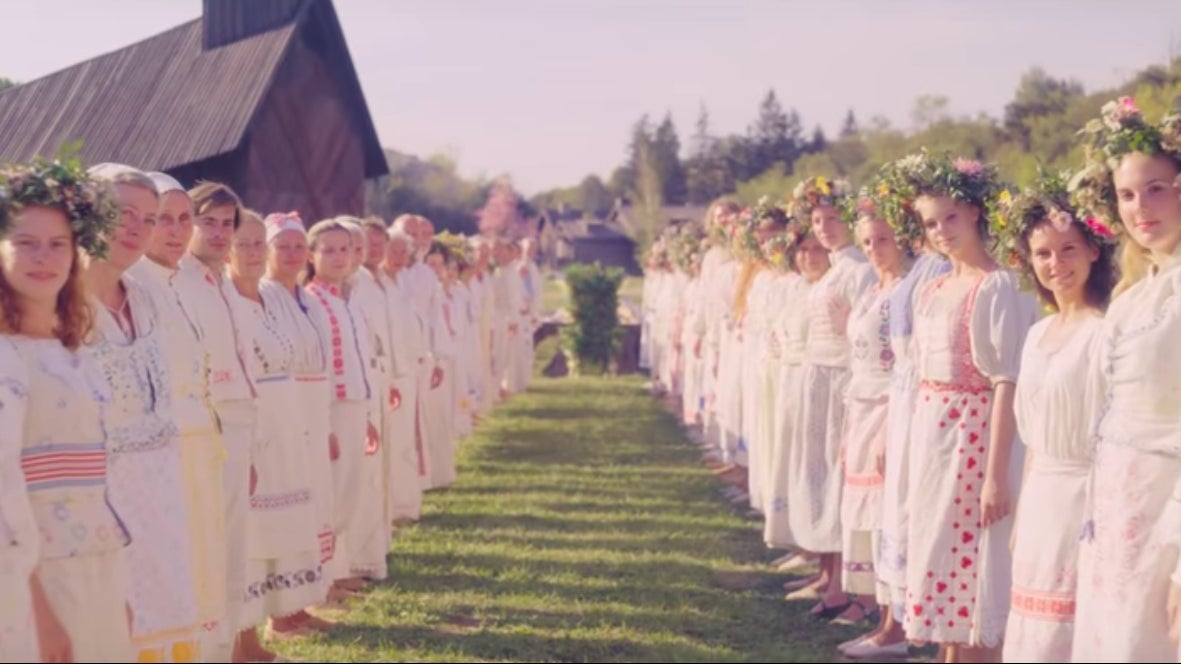“Midsommar” will revive the lost art of daylight horror
We’ve been trained to believe that daytime scenes in horror movies are reprieves—the time to catch your breath and unclench your knuckles before night comes again. But a new film by rising auteur Ari Aster promises to put all of its horrors right out in the open and in the light of day.


We’ve been trained to believe that daytime scenes in horror movies are reprieves—the time to catch your breath and unclench your knuckles before night comes again. But a new film by rising auteur Ari Aster promises to put all of its horrors right out in the open and in the light of day.
In Midsommar, you won’t have a chance to put your guard down because it appears as though the entire film takes place at an idyllic countryside retreat on a warm, sunny day. Aster’s follow-up to last year’s breakout hit Hereditary, Midsommar follows a couple visiting their friend’s hometown in rural Sweden for a mid-summer festival that happens only once every 90 years.
Of course, the trailer released today makes it quite clear that what follows is no pastoral getaway. The couple falls into the hands of a demented pagan cult ritual that makes the Fyre Festival look like a stay at the St. Regis Maldives.
When we think of horror, we generally think about the nighttime. Zombies, vampires, witches, and werewolves, slashers and serial killers, are all horrors of the night, when evil lurks under cover of darkness and in the shadows, around corners and beneath your bed. It’s intuitive: In the dark, our imaginations run wild. There’s no safety, no comfort at night.
So that makes it all the more unsettling when a horror film takes place mostly during the day. It subverts our expectations completely, shining a light on evils we assume only exist when the sun goes down. It’s destabilizing.
The website TV Tropes further describes what we call daylight horror: “Sunlight illuminates the ugliness and gore in shocking detail and clarity.” We’re not used to seeing unspeakable things on a nice summer day, say, prancing through a perfectly green pasture in the Scandinavian countryside. Such images are uncanny, surreal—far more surreal than a monster shrouded in darkness.
Midsommar shares a lot of DNA with The Wicker Man (the 1973 original, not the unintentionally amazing remake with Nicolas Cage), and not only because it is also about a pagan cult in an idyllic landscape. That film took place almost entirely during the day. Its vibrant, crystal-clear daytime images are some of the most iconic in the history of horror:
The Wicker Man didn’t look as out of place in 1970s cinema as it does today. Several of its contemporaries, which we now consider to be classics of the horror genre, took place mostly in the daytime. The final scene of The Texas Chainsaw Massacre (1974) is daytime horror at its best. Leatherface, having been eluded, frantically waves his chainsaw through the air, the sun just beginning to set behind him:
The Hills Have Eyes (1977) and Halloween (1978) also featured iconic daytime scenes. The Shining (1980) takes place indoors, but the lights are on in almost every scene.
Since then, daylight horror is harder to come by, but it hasn’t disappeared completely. David Lynch has a penchant for it—the infamous diner scene in Mulholland Drive (2001) is one of the most effective uses of lighting in horror ever. The opening of 28 Weeks Later (2007) played out over a bright morning in the English countryside. It Follows (2014), The Witch (2015), and It (2018) all had memorable scenes in the middle of the day as well.
The “picnic scene” in David Fincher’s Zodiac (2007) might be the ultimate example of how a beautiful day can be made to stand in contrast to, and thus illuminate, a horrific act of evil.